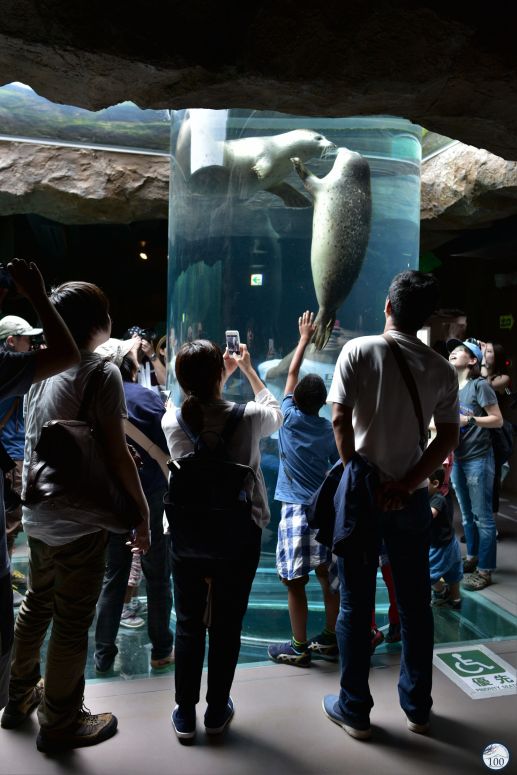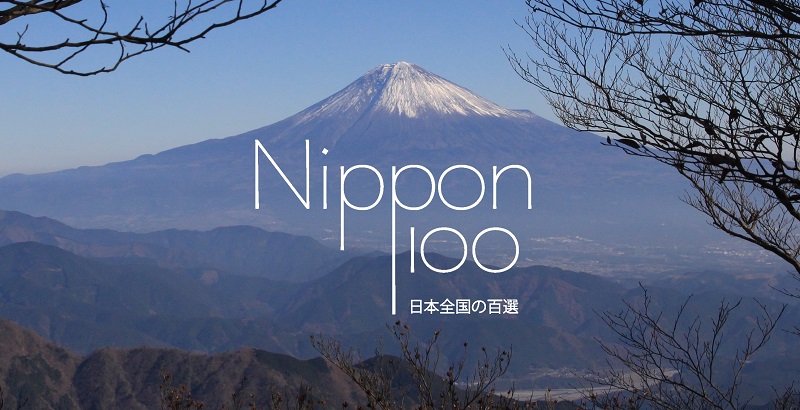We were at first puzzled to find a zoo among the 100 landscapes of Heisei Era, as we are not fond of that kind of places and Japan has so much to offer naturally and historically. But the Asahiyama zoo, North of Asahikawa in Hokkaido, is a serious matter in the country as many Japanese has an emotional bond with the park. And Asahiyama has long been famous for its once modern features, including glass tunnels and windows allowing a closer look at animals, and is still known as the first Asian zoo with a penguin walk.
Asahiyama zoo has been opened since 1967 and is thus celebrating its 50 years operating this year. Many visitors are coming to the famous northern zoo, and many of them begin their visit gathering either in the sub aquatic tunnel under the penguin pool or around the vertical water tunnel used by the seals (known as the Marine Way). And the sight is truly a charming one.
The two tunnels, along with the red pandas bridge are some examples of the many walk-through under animals enclosures – allowing to discover their habits with an inside and renewed sight. These features are a result of a huge questioning in the 1990s following a closing time after the death of a gorilla and a lemur.
These modern features, while now looking a bit old-fashioned – especially around mammals enclosures (wolves, polar bears and felines) – helped the zoo to become famous in the whole country. On the other hand, the penguins and seals ones, the most famous, are good experiences.




 |
 |





 |
 |

 |
 |

While the Marine Way gathers many visitors in summer, the main attractions of Asahiyama zoo are definitely the penguin walks held every winter. The sight of the tiny penguins walking on the snow in the zoo alleys is then to be found on every social network. It is also a way for them to exercise, as a British newspaper was writing.



Besides these famous features, we were a bit puzzled by the zoo, as its standards are still very different from today’s European and American zoos, with bigger enclosures and less species. But Japan is also questioning itself, as proved the petition launched by the blogger Ulara Nakagawa to send Hanako, a female elephant from one of Tokyo’s zoo, back to Thailand.
As for us, if we did enjoy the tunnels of seals and penguins (two species among the ones that seems to be less confined), we definitely prefered the many places in Japan where one is able to observe wild animals (Nara’s and Miyajima’s deer or Kyoto’s monkeys being three examples among many others). All these natural places – among them the Japanese macaques of Nagano or the brown bears of Shiretoko for example – are in our opinion more unique sights, not to be found elsewhere and far better animal experiences and encounters than zoos are.


How to get there?
Asahiyama zoo (820 yen per adult) is a bus ride from Asahikawa station (Buses 41,42 or 47, about 40 minutes for 440 yen). Some irregular buses are also running from Asahikawa airport (550 yen one way, 35 minutes).
To reach northern Asahikwa from Tokyo, beside from the plane (available from Haneda airport with JAL and Air DO, 12000 to 45000 yen), the train is a serious but long option, with changes at Sapporo and Shin-Hakodate (30000 yen for about 10 hours, JR Pass OK).
In Hokkaido, Asahikwa is 80 minutes away from Sapporo using a Limited express on the Hakodate Main Line (4500 yen, covered by both the JR Pass and Hokkaido pass). Local trains are also running between the two cities through a longer and cheaper journey (2490 yen and 2h40).

